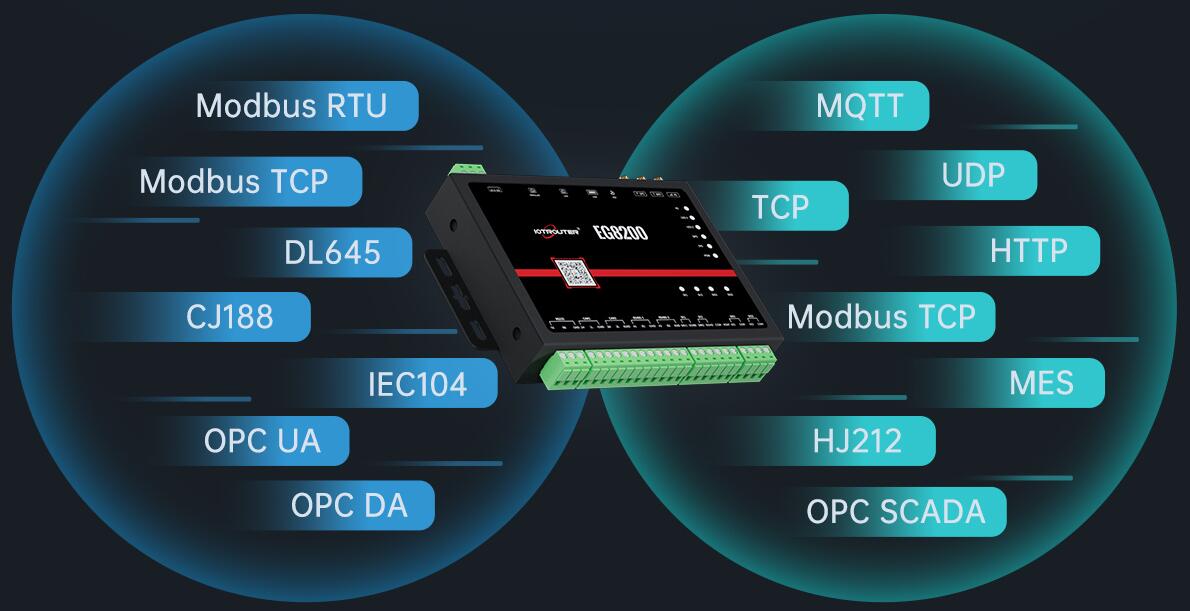The MQTT protocol gateway is a middleware that is responsible for receiving messages from different MQTT clients and forwarding them to the MQTT server; at the same time, it can also receive messages from the MQTT server and forward them to the corresponding MQTT clients.The main functions of the MQTT protocol gateway include protocol conversion, message filtering, security authentication, load balancing, etc., to ensure reliable transmission and stable operation of the messages. reliable transmission and stable operation of the system. With the rapid development of IoT technology, MQTT protocol, as a lightweight publish/subscribe messaging protocol, has been widely used in IoT applications.MQTT protocol has the characteristics of low overhead, low bandwidth, and high reliability, and is suitable for small data volume, high frequency, and low latency communication between devices. The MQTT protocol gateway plays the role of a bridge between different MQTT clients and MQTT servers, and is an indispensable part of the IoT system.
I. MQTT Protocol Gateway Solution Design
1. Protocol Conversion
MQTT protocol gateway needs to have protocol conversion capability to adapt to the communication needs of different MQTT clients. The gateway should support multiple MQTT versions and be able to convert between different versions. In addition, the gateway should also support conversion with other protocols, such as HTTP, CoAP, etc., in order to communicate with more types of devices.
2. Message Filtering
The MQTT protocol gateway should be equipped with message filtering capabilities to enable screening and filtering of messages. By configuring rules, the gateway can filter messages based on subject, content and other conditions, and forward only the messages that meet the conditions, thus reducing unnecessary network transmission and server load.
3. Secure Authentication
In order to ensure the security of data transmission, the MQTT protocol gateway needs to implement a secure authentication mechanism. This includes client authentication, encrypted transmission of messages, and so on. By configuring certificates and keys, the gateway can ensure that only authenticated clients can access the system, and encrypt the transmitted messages to prevent data leakage and tampering.
4. Load Balancing
In a large-scale IoT system, the MQTT protocol gateway needs to handle a large number of concurrent connections and message transmissions. In order to achieve high availability and performance optimisation, the gateway should adopt load balancing technology to distribute requests to multiple back-end servers for processing. This not only improves the processing capacity of the system, but also reduces the load pressure on a single server.
II. MQTT Protocol Gateway Implementation Steps
1. Determine The Requirements And Scenarios
Before implementing the MQTT protocol gateway, you need to define the system requirements and scenarios. This includes determining the type and number of MQTT clients that need to be connected, as well as the frequency of communication, in order to select the appropriate gateway hardware and software platform.
2. Configure And Deploy The Gateway
Select the appropriate MQTT protocol gateway software according to the requirements, and configure and deploy it. The configuration process includes setting the IP address, port number, authentication method and other parameters of the gateway to ensure that the gateway can normally access the network and communicate with the MQTT server.
3. Testing and Tuning
After the deployment is completed, the MQTT protocol gateway needs to be tested and tuned. The testing process includes verifying whether the gateway’s protocol conversion, message filtering, security authentication and other functions work properly; the tuning process is to optimize the performance of the gateway, such as adjusting the size of the message cache and optimizing network transmission parameters.
4. Monitoring and Maintenance
The MQTT protocol gateway requires real-time monitoring and maintenance during operation. The monitoring tool can check the connection status and message transmission of the gateway in real time; at the same time, the gateway needs to be maintained and upgraded regularly to ensure its stable operation and security.
As a key component in the IoT system, the design and implementation of MQTT protocol gateway is of great significance to ensure the stability and security of the system. Through the implementation of reasonable protocol conversion, message filtering, security authentication and load balancing functions, an efficient and reliable MQTT protocol gateway solution can be constructed to provide strong support for IoT applications.
